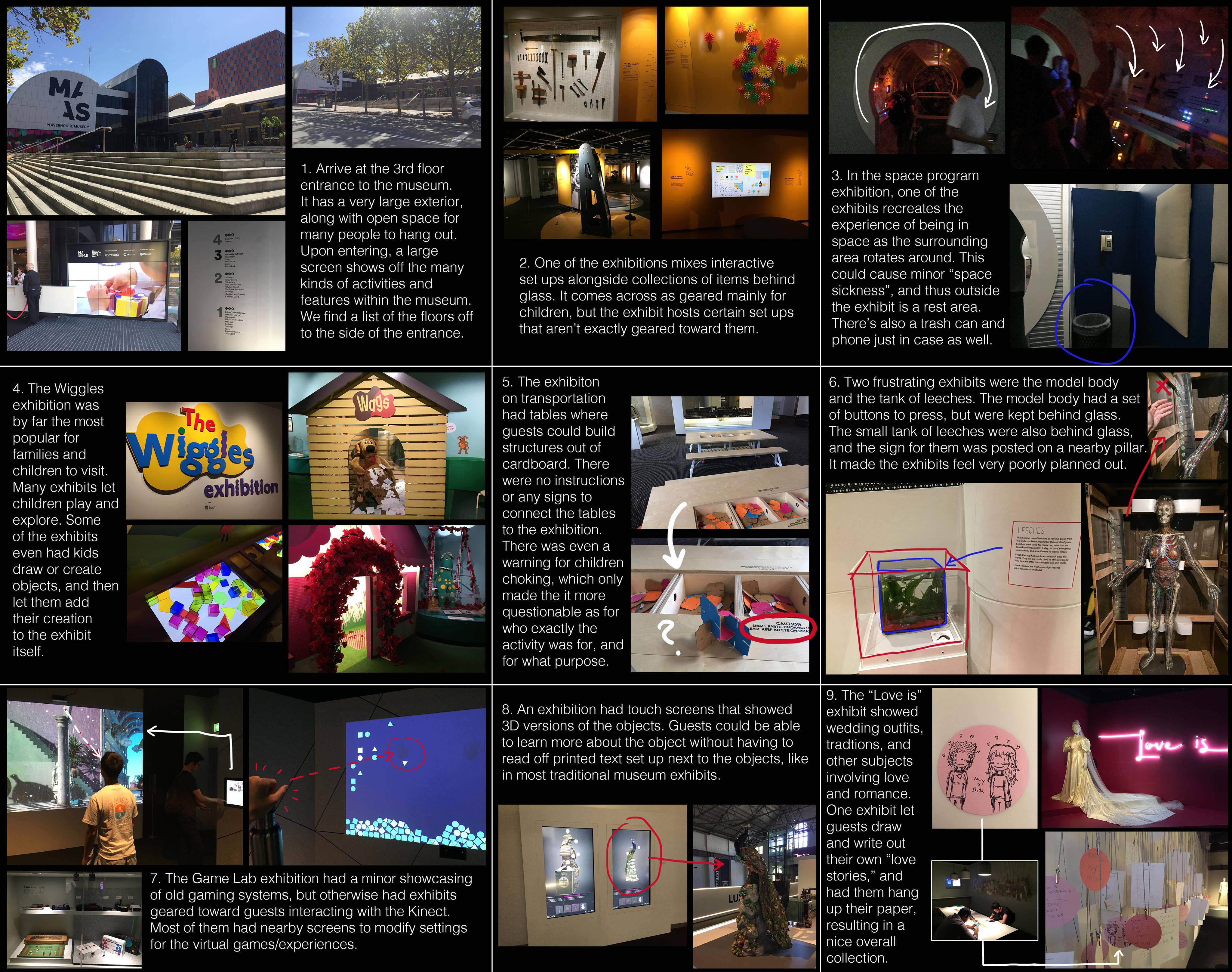
Overview
Museums are dormitory of curiosity, and interaction is a good
way to boost this curiosity yielding to better learning
experience.
The task provided was to design a digital/tangible/spatial experience that builds upon the
collection that the institution offers. The primary goal was to improve the visitor experience, fulfill educational goals of the
institution, and help the institution to engage with new audiences or affirm their relationship with existing
ones.
About Project Ethix
This project was developed at the University of Sydney User Experience Design Studio in conjuction with Powerhouse Museum Sydney.
Redesigning the visitor experience at Powerhouse Museum Sydney for young adults to provide a more modern and engaging experience that speaks to the youths of today.
Timeline: 12 Weeks - 2018
Role: UX Researcher, UX/UI Designer, HCI Researcher and Video-editor
Team: Abhinav Bose, Ethan Bookstein, Mike Ma, Jingxuan Cao
Direct Experience Storyboard
Systematic observation, experience documentation and storytelling.
Following our visit to the Sydney Powerhouse Museum and Nicholson Museum, we created a photo-narrative storyboard to highlight the current pain points of the user experience and begin framing user needs.




